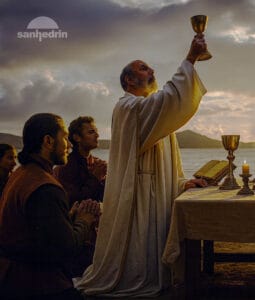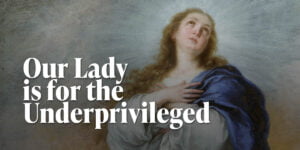Escribe:
Pharisee:
As far as I can see, the question on where the first mass in the Philippines and when had long been settled after the panel led by no less than National Artist and historian Resil Mojares had issued a final statement in 2020 that all evidences point to the fact that it was held in Limasawa reaffirming the 1998 decision of the former National Historical Commission.as earlier determined by the different panels for the same body in 1995 and 1960. In fact, the findings of the NHI were instrumental in the formulation of Republic Act 2733 which named Magallanes, Limasawa as the site of the First Mass held in the Philippine Archipelago.
Emma Helen Blair and even John alexander Roberts in 1909 both claimed that Mazaua is actually Limasawa but both were not able to explain why. In 1960, historians from the national Historical Commission concluded that Mazaua is actually and used their findings to help draft the Limasawa Law. This law (R.A. 2733) became a law without the executive approval of the then president, Carlos Garcia.
The Limasawa decision came in the light very compelling evidence culled from the chronicles of Antonio Pigafetta and the logbook of Francisco Albo who were part of Magellan’s expedition and who were really eye witnesses of the events. Without doubt, Magellan’s route was established as having sailed from Homonhon to Mazaua (Limasawa) to Sugbu (Cebu) without mention of Butuan where Mazaua is. Miguel Bernad, S.J. used the argument of omission wherein he said that Pigafetta never mentioned a riverine settlement nor mentioned Butuan. It is therefore clear that Fr. Pedro Valderama officiated the First Mass in Limasawa which was chronicled by Pigafetta as Mazaua.
Saducee:
It is sad to see that despite the efforts of the Mazaua group, and the evidences they presented, the political sway which was first used by then First Lady Imelda Marcos even holds even today, now especially because her son, BBM is president. This happened despite the fact that there was already a long standing tradition, from 17th century to 19th century that Mazaua in Butuan, Agusan Delta as the site of the First Mass officiated by Fray Pedro Valderama. In fact, in 1872, a monument was erected to reinforce the Butuan tradition. Mazaua is actually the name identified in the Pigafetta chronicle and not Limasawa.
This is also based on the navigational issue raised that Magellan’s ship travelled from 20 to 25 leagues from Homonhon which places Butuan within a more reasonable range of travel from Homonhon rather than Limasawa which is about half the distance only if the expedition travelled from Homonhon to Limasawa only. Likewise, the balanghai mentioned as the boat which King Siagu
and King Kolambu rode can only be proven to have existed in the Agusan riverine settlement which is Mazaua in the kingdom of Butuan.
The Butuan claim is reinforced by the mention of Butuan in the writings of two Jesuits namely Fr. Francisco Colin and Fr. Francisco Combes. The dates, April 8 and 7 were mentioned, respectively, in the same year, 1521.
The idea of Limasawa is actually the Mazaua being mentioned came from the wild guess by Carlos Amoretti in 1800. He discovered the transcript of the Pigafetta manuscript and never read the Francisco Combes story. Similarly, Manuel Walls of Merino in 1899, translating the Italian translation of Amoretti into Spanish suggested that perhaps Mazaua may be Limasawa. For us, Saducees, these are mere conjectures.
In 1953, there was even a request from the people of Butuan to rehabilitate the marker by the Philippine Historical Committee as they found the Jesuit accounts very credible. Author historian Gregorio Zaide, a politician from Pagsanjan, Laguna adjudged that that the site was really Butuan. His daughter, Sonia Zaide, also a historian supported this. Based on this, Butuan representative Ching Plaza introduced a bill naming Butuan (where Mazaua is located) in 1995, as the true locus of the First Mass. Congress chose to refer the matter to the NHI for re-examination but Limasawa was re-affirmed by the panel led by Samuel Tan in 1998.
Potenciano R. Malvar even called the Limasawa decision as a hoax and considered the it a tragedy in Philippine history even as he tried to use the court of law against it.
Roman:
Yes, but we, Romans are not just romancing the stone and rather feel that one can not rectify a historical flaw using legal procedures. Or are we too naïve not to know that even courts of law can make unjust decisions. Waray prelates advancing Homonhon Island in Samar as the real site are on the right path since they are using the socio-theological approach.
Msgr. Lope Rodredillo and Fr. Neil Tenefrancia are both Waray priests. It must be that they both noticed that Giovanni Carari observed that it must be Whit Sunday instead of Easter that the First Mass was said providing theorists the possibility of other important dates in the church which could be chosen by fr. Valderama but this is too far-fetched since the day of the Pentecost is 50 days after Easter.
Nonetheless, Tomas “Buddy” Gomez who was former press secretary to Corazon Aquino thought that the Easter Mass in Limasawa may not actually be the first since the expedition was in Homonhon Island in Samar. Said days include another important possible day for the holding of the Mass which is Palm Sunday.
Using therefore, the liturgical year for 1521 which a priest is more likely to observe, the priests contend that there must have been at least one mass held in Homonhon Island now politically located in Eastern Samar and that is most likely Palm Sunday and not Easter as alleged before.
Herodian:
One would be surprised to realize that a legal battle had ensued because of the controversy between those who advance the Mazaua cause and those who decided in favor of Limasawa. Such an effort would somehow end up as an exercise in futility but the action manifests the gravity of the passions involved in the said conflict. But we, Herodians feel that there should not really such a great fuzz about it.
Are we to believe that such an event has indeed brought something good to the natives during that time. Even the christening of Humabon and his wife in Sugbu (Cebu) did not really change much of the character of the natives. Humabon, we believe, even baptized as Carlos already in honor of the King of Spain was instrumental in exacting revenge on the abusive Spaniards who did not join the battle against Lapulapu but instead took advantage of the women left behind by their warrior husbands through Rajah Tupas.
From the Constructivist point of view, we feel that the Catholic Church simply wanted to dramatize its religious presence in the Philippine archipelago. In fact, we may ask, is it really good if the natives of the islands were exploited and even enslaved in the name “spreading the gospel”?
Zealot:
It would not be surprising if William Henry Scott, a noted historian was zealous in declaring that Blessed Odorico never came to the Philippines Particularly in Bolinao, Pangasinan to officiate the very first mass in 1324.
That definitely will be much than the 1521 Mass. Anyway, wasn’t he the one who debunked the Urduja and Kalantiaw myths, the latter one being proven as a mere hoax by Jose Marco?
If not for Scott’s zeal, perhaps, the Philippines would even be poised to celebrate a seventh centenary celebration of the Catholic Church last year. But logical as always, he easily pointed out from his experiences in the Cordillera that natives are hostile to strangers and would have easily killed Odorico had he really landed in Bolinao rather than in Indonesia. Austin Craig, himself, who welcomed the Princess Urduja myth even quotes Urduja making a speech against the white strangers. Apolaki was bent on reprimanding white men who are ugly with their white teeth as natives blacken their teeth.
But most admirable are Scott’s zeal in showing that the plants mentioned in the Odorico writings are not from the Philippines but are rather found in Indonesia proving that he had indeed landed in that archipelago instead of the Philippines. Moreover, he pointed out that the most likely place is Banjamarsin because it is identified as “salt garden “city. This must be the “Thalamasin” which Odorico of Friuli recalls.
Aside from Scott, we laud Bob Couttie, British historian who was responsible for the Balangiga bells to be returned by the Americans. Couttie scoffs at the idea that Odorico officiated a Mass on Christmas in Bolinao especially because he said there are no Christmas trees yet in the fourteenth century and Odorico couldn’t be carrying a pine tree to turn into a Christmas tree wherever he landed. William, the Irish, Odorico’s companion also never mentioned some place like Bolinao even if he was recognized for being his companion.
We, brothers however of the Sanhedrin believe that Blessed Odorico may have come to the Philippines in 1324 and as a priest would have officiated in at least one Thanksgiving Mass. We also do not discount the possibility of a mass for Christmas which would include a belen since tradition have St. Francis of Assissi as the one having started it for the Franciscans and Blessed Odorico is a Franciscan.
Whether William the Irish forgot or omitted things is not important to us because we feel that he may just have been a European companion upon Odorico’s return.
I think Cottie’s Christmas tree story is itself a prank for nobody had claimed it for sure.
As for Scott’s zeal we have this to say; 1) he may have forgotten that Kings Kolambu and Siagu themselves are not hostile to white strangers because they have performed the kasi-kasi straight from their kasing-kasing (heart), 2) he himself experienced the warmth of friendship from the natives of the Cordillera of which some are headhunters, 3) Banjarmasin is rather known as the city of “thousand rivers”; it’s lesser appellate as the salt garden city does not refer to it as a place where salt is made; rather it is called such because there are times when its river turns salty because of the incoming tide from the sea, hence the appellate is similar to the naming of Maasin City (Leyte) and Maasin River in Siargao because of its intake of brine, 4) In contrast, Pangasinan is literally a place where “salt is made” and particularly in Bolinao, there are still people who make salt for a living, 5) Indonesia and the Philippines as archipelagos have the same biome, and therefore the process of extracting starch from such a tree “sago”, can still be evident to have been done.
Likewise, the people of Bolinao are exempt from Apolaki’s fury as they need not blacken their teeth or use teeth coloring as “moma” observed in the Cordillera, because some of them have the means to have their teeth decorated in gold as proven by the Balingasay skulls.
Also, the observation that Banjarmasin and Champa are both down the equator and so why would Odorico’s ship be going as far as Bolinao is noted but let us also take note that tempests do not respect straight navigation and destiny may have it that God can make lines by using crooked segments. Moreover Banjarmasin is a name which evolved from Bandar Masih meaning Port of Masih and until today Indonesia is not known as a salt producing region but rather an importer of salt.
As to the other arguments and controversies, we have heard enough and we just wish the proponents good luck.
Rico del Sol
Simon Fe Dolor
Felipe Fortitudo
Benito Sanctitus
Bartholomew Es Graforti
Jose Maria Francisco
Dennis Atienza
Jude Missa





